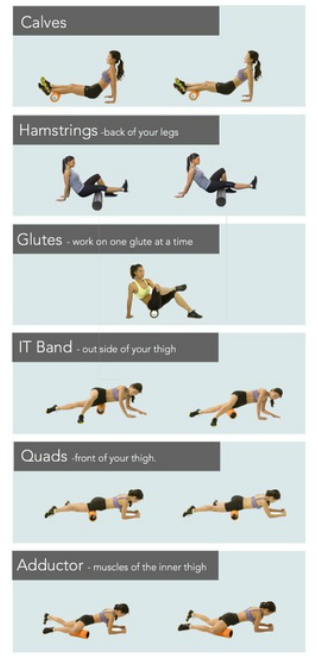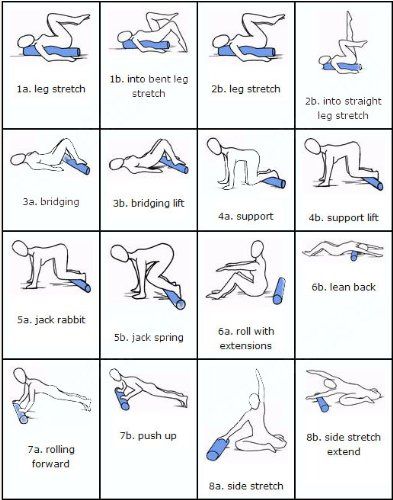Hello!
My name is Imogen; I'm a Certified Athletic Therapist in Cambridge,
ON and owner of Hespeler Village Athletic Therapy. My area of
expertise is with dancers and their
injuries. During my childhood and teenage years, I was a competitive
dancer which has given me the insight and experience to better help
my dance clients. I'm
so excited to talk about dance injuries because it allows me to bring
my two passions—dance and Athletic Therapy--together into one
topic! I hope you enjoy reading it as much as I enjoyed writing it! But, please be aware that it's kind of a long one.
When you think of athletes, dancers probably don't pop into your mind. This is unfortunate, because dancers are athletes who pour their mind, body, and soul into a passion for their
sport, not unlike football, hockey, or rugby players. If young
dancers are at a high level, they can be at the studio
upwards of 4 hours per day, and professional dancers spend even more
time in the studio!
For young dancers, their time spent dancing is outside of the hours
spent in school and on homework, they may even have a part time job
to work around. Can you imagine the physical and mental toll this
can put on their body? For this reason, a major factor in dance
injuries is fatigue. These athletes are so passionate
about perfecting their jumps, turnout, or pirouettes that they don't
take the needed time off for recovery. In the grand scheme of
things, this is not the best way to improve your performance. But
we'll come back to this in a few minutes.
Now, we all know that dancers are known for being extremely flexible
and graceful, but a common misconception is that they aren't
"real athletes". Dance takes an incredible amount of strength, control,
agility, and balance, which often brings along the typical types of
injuries you'd see in sports. The most common injuries seen in
dancers include:
Typically, when dancers sustain these injuries, they tend to “dance
through the pain” rather than going to their local Athletic
Therapist for an appropriate dance specific rehab
program—shameless self promotion! In some instances, the
dancers seek help from a therapist who doesn't specialize in dance.
This can lead to frustration and a
non-committal attitude
to their rehab program because they feel misunderstood and
don't see the relevance in the exercises or advice given--I'm
speaking from first hand experience here. For this reason, it is my
opinion that the most important step in treating and
maintaining your dance injuries is to seek help from an appropriate
medical professional that knows and understands the demands of
dance.
The second most important piece of injury prevention advice I can give is for every
dancer to ensure that he/she has a very strong core. I don't mean
the “hey, check out my six pack” type of “core” that you may
be thinking of. I mean the deep deep muscles that stabilize
your spine and keep everything in control, so all of your other
muscles can do their jobs.
Do you know what I'm talking about? If not, don't worry, I'm going
to tell you!
Your core is comprised of some very deep muscles that attach to your
spine and are within your abdominal cavity. See how this can be
confused with that awesome six pack you've got going on?
If you were to look even deeper, under that six pack, you'd find a
broad flat muscle that wraps around you like a weight lifter's belt,
called transverse abdominus. This is what most people are talking
about when they say “core.”
But wait! There's more to it than
that! You also have to consider the small group of muscles that run
up and down each side of your spine on the back side, called
multifidus. They control the rotational stability between individual
vertebrae and assist in extension of the spine. Then there is the
pelvic floor and diaphragm which create the “floor” and “roof”
of the entire functional unit we like to call your core. If you
picture these muscles contracting together, they theoretically create
a small, dense cylindrical shape within your abdominal cavity which
is your “core.”
Now, consider this example: dancers require excellent strength in
their hip flexors and surrounding muscles to lift their nice straight leg, with a beautifully
pointed foot, high up in front of them and gracefully hold it there
for what seems like an eternity. But let's pretend this particular
dancer has a weak core and is struggling to hold her leg for a few
seconds at an eye-soring level of just above 90 degrees—oh my!
Part of the struggle here is because her core muscles are not working
with her in this position to stabilize her spine so her hip flexors
can do their job. In a lot of cases, the hip flexor (specifically
psoas major in this case) is left to split it's task between
stabilizing the lumbar spine that it's attached to and lifting the
leg into forward flexion. Since this muscle's main job is to bring
the leg into hip flexion, it really
struggles when you ask it to do both.
Maintaining a strong core is so so
SO important for dancers to be able to do the movements required of
them. I've also been reading up about how a weak core can cause
chronic neck tightness in dancers (and other athletes), so check out
my website
for a blog on
this soon!
If you want a more in depth explanation of how important your core
is, read my blog post about it!
Another important aspect of maintenance for dancers is ensuring
proper breaks from dance. See? I told you we'd come back to this.
You probably thought I forgot, didn't you?
“Take breaks from dance” is meant in two ways, full out rest OR do
something else for a while. Yes, you should schedule down time into
your busy schedule! Everyone should, it's good for your mental
health and gives your body some time to recover from the demands you
place on it.
Taking a break from dance doesn't always have to mean complete rest
and doesn't mean it needs to be for an extended time! Cross training
is an important aspect for any athlete and is equally important for dancers.
In the studio, a dancer works a lot on technique,
plyometrics, and agility but there isn't
much strength or cardiovascular training. For this reason,
it is very important that
dancers build in time for cross training, which also gives them a
little break from too much dancing—yeah right, there's no such
thing, right? Wrong! Build “dance breaks” into your
schedule, it will help you to stay fresh, strong, and avoid
over training.
There have been many research
articles suggesting that strength training is
quite helpful with injury prevention for dancers, and if it's done properly there will be no
major muscle bulking, which is what every dancer is trying to avoid.
In fact, it helps to ensure that every muscle is working
to it's full capacity, therefore you can jump higher, lift higher,
dance longer, and look great while you're doing it!
I've also been
reading that the Fartlek Interval Training
method is the most highly recommended method for dancers looking to
work on their cardio endurance—you should all want to do this, it
will help your performance immensely! Think
about it. Try and schedule some cross training into your life and
you'll see the positive effects on your performance both in class and
on stage. Maybe you'll even finally get that solo you've been working so hard for!
Also, please consider your
ankles when strengthening! If you're planning on starting pointe or
already are en pointe, keep working on that ankle strength! And I
don't mean just sitting on the floor
with a theraband pointing and dorsiflexing your ankle. You
need weight bearing, functional, ballet specific movements to be
strong enough to be successful! Ask
your teacher for advice, or you could ask your local, friendly,
Athletic Therapist--there it is again ;)--for some dance specific training exercises to get
you started.
The last thing I'll mention is that you NEED to take care of your
feet! Just like musicians have to take care of their hands, dancers
need to care for their feet! This means:
Keep your toe nails short and cut straight across—a curved cut can
leave you prone to ingrown nails and nobody wants that
Don't wear coloured nail polish on your toes all of the time—you
won't be able to easily see if you're having any of the typical
dancers foot problems
Look after your calluses, they aren't all bad—don't file
them off unless they are becoming too big and cumbersome/painful and
interfering with your dancing. They protect you from unnecessary
blisters and abrasions
Be sure to keep your blisters clean and covered—there are products
and methods that can help reduce friction on a blister or blister
prone area. Ask your dance teachers for advice, they know what
you're going through!
If you find that you are getting blisters often, even after your
shoes are broken in, consider going back to the store and being
refitted. Chances are, your shoes aren't right for you. Maybe you
need a different shape/size/style
I know I've thrown a lot of information at you in this post but here
is a recap of the main take-home messages:
Seek professional medical advice from a therapist who has got a lot
of experience with dancers and preferably has first hand experience
dancing at a high level
CORE STRENGTH—I can't stress this enough. It will improve your
dancing noticeably and help you to be less prone to injury.
Schedule
“dance breaks” into your week and try cross training sometimes
too. It
will help your performance immensely!
Strength training is important. You should all be doing it, no
exceptions.
Take care of your instruments—YOUR FEET!
Most
importantly, HAVE FUN! Dance is meant to be a fun, educating,
and worthwhile experience. Don't try so hard that it becomes
less fun for you. Take advice from your teachers, appreciate
what they're telling you, and try to apply it to your own dancing.
"Great
dancers are not great because of their technique. They are
great because of their passion" --Martha
Graham






